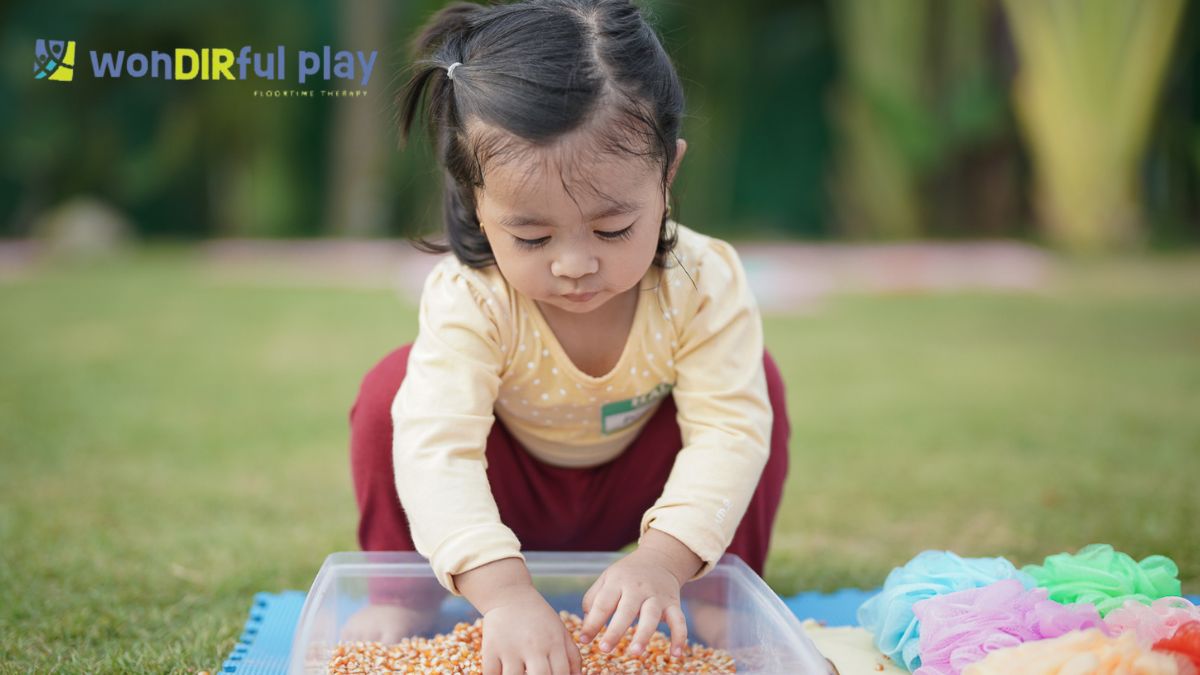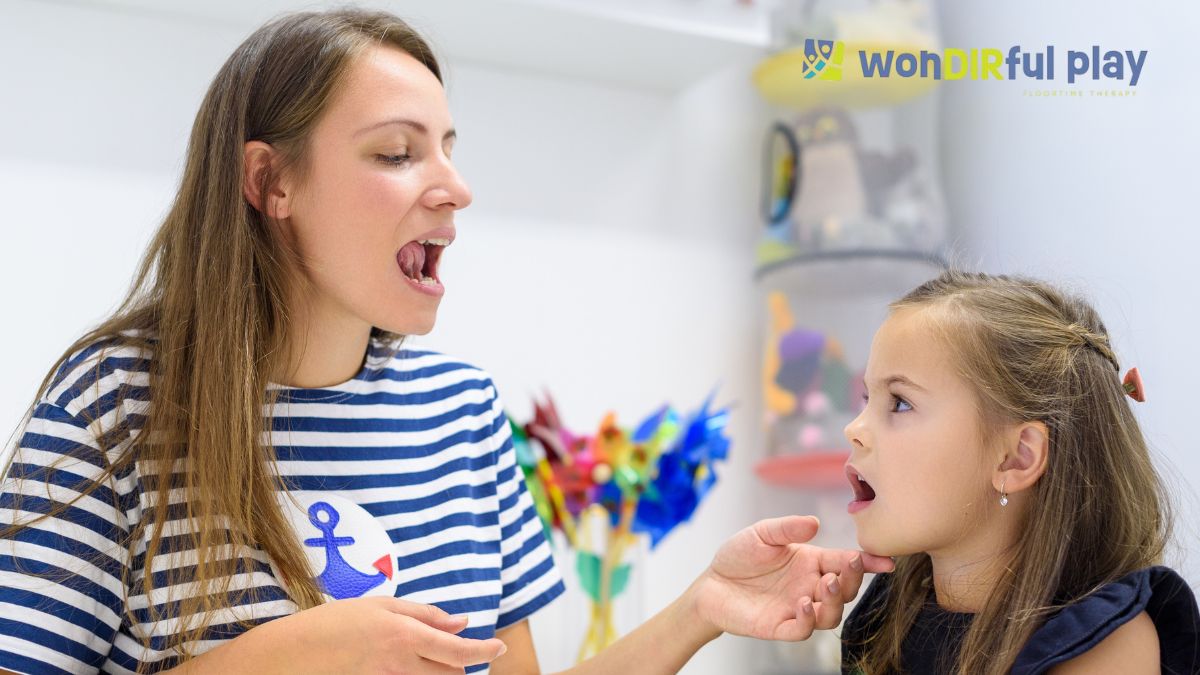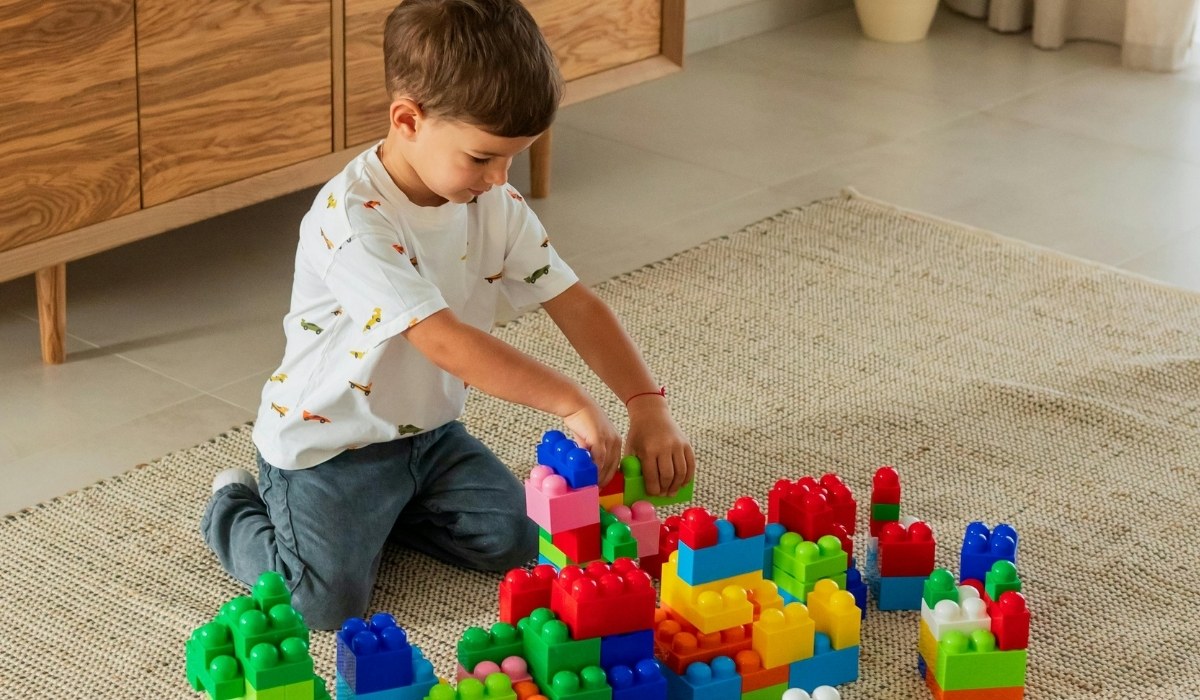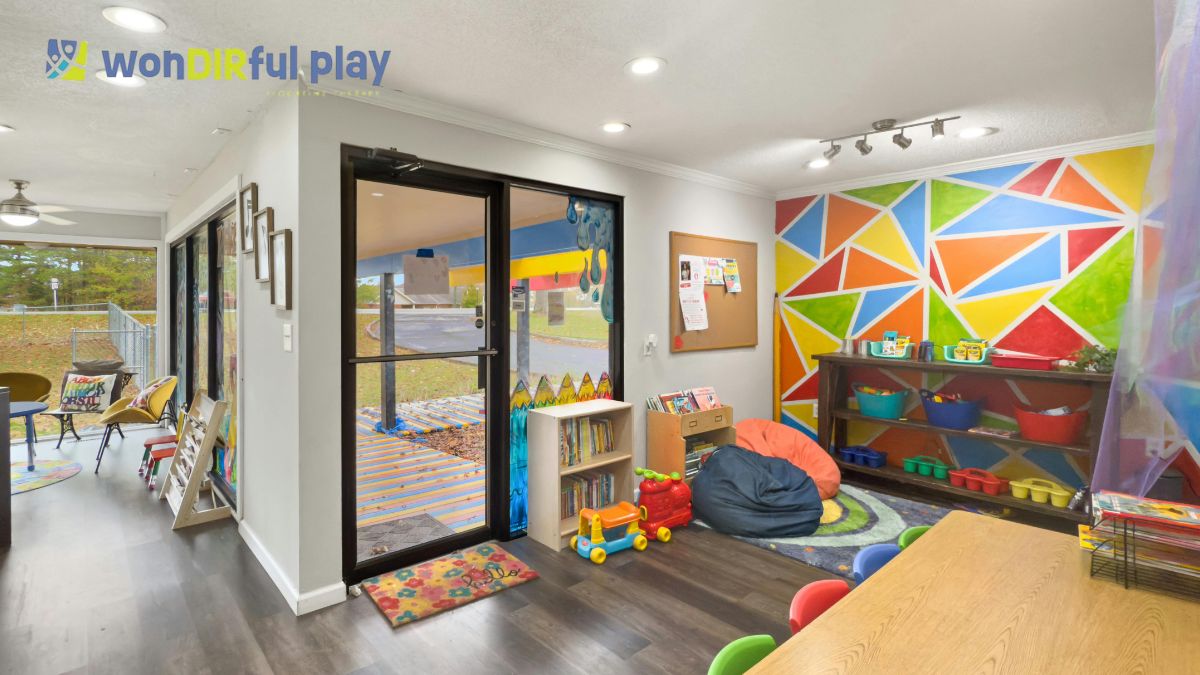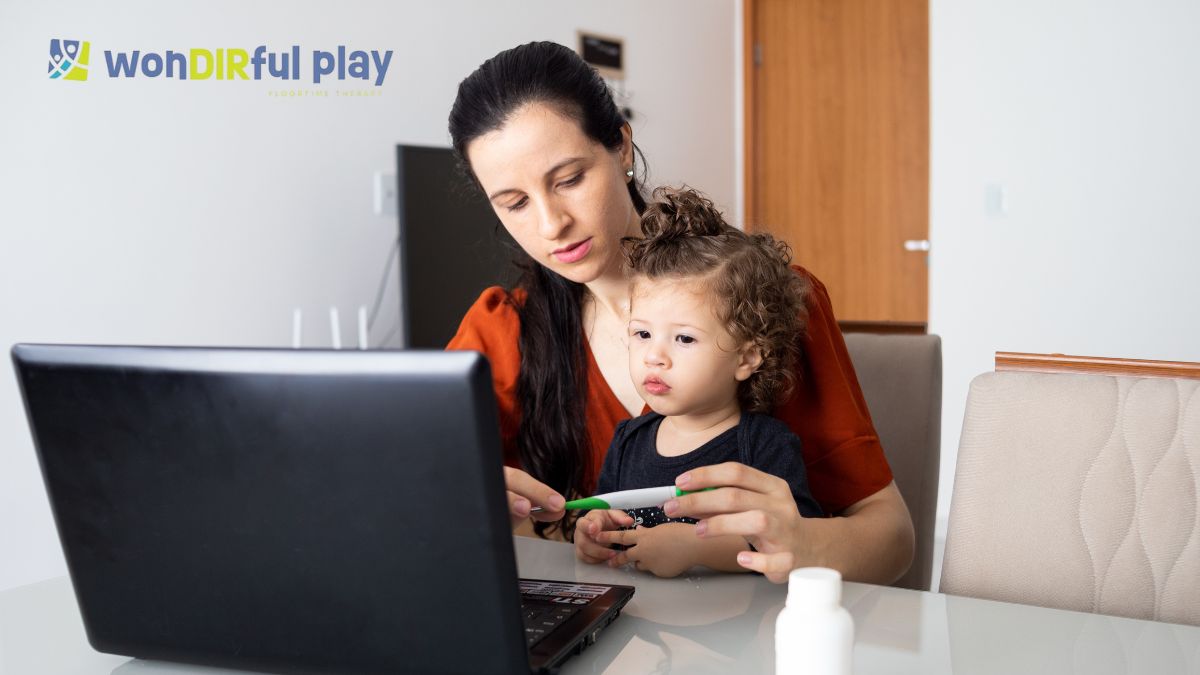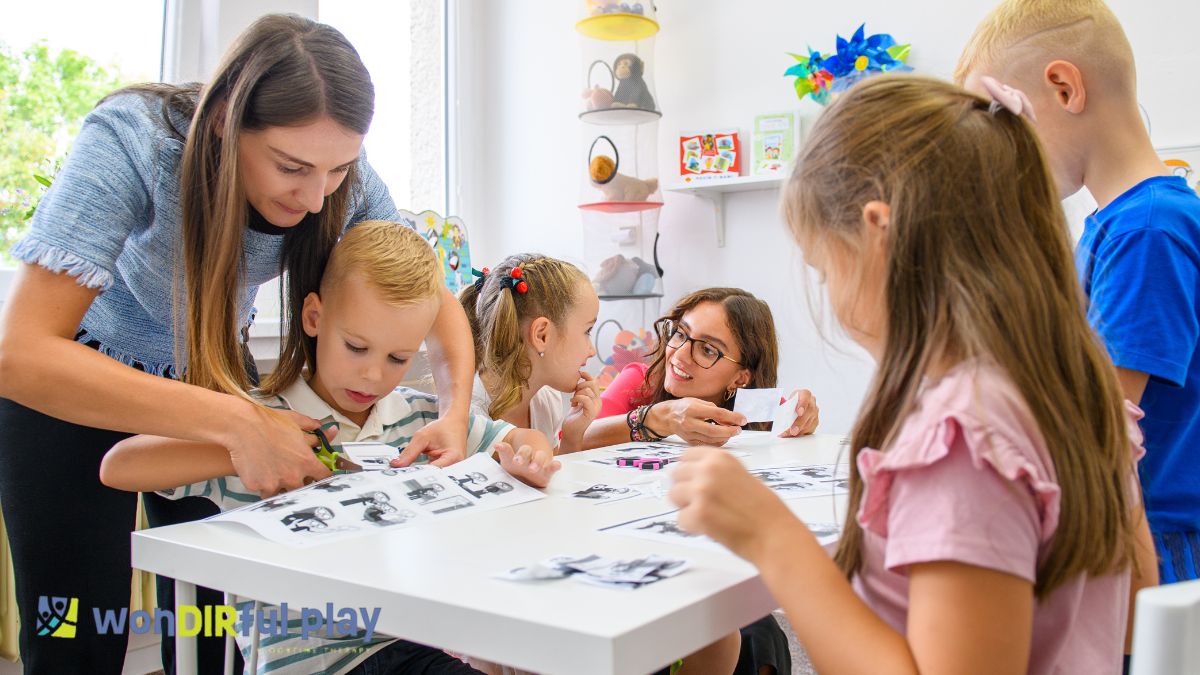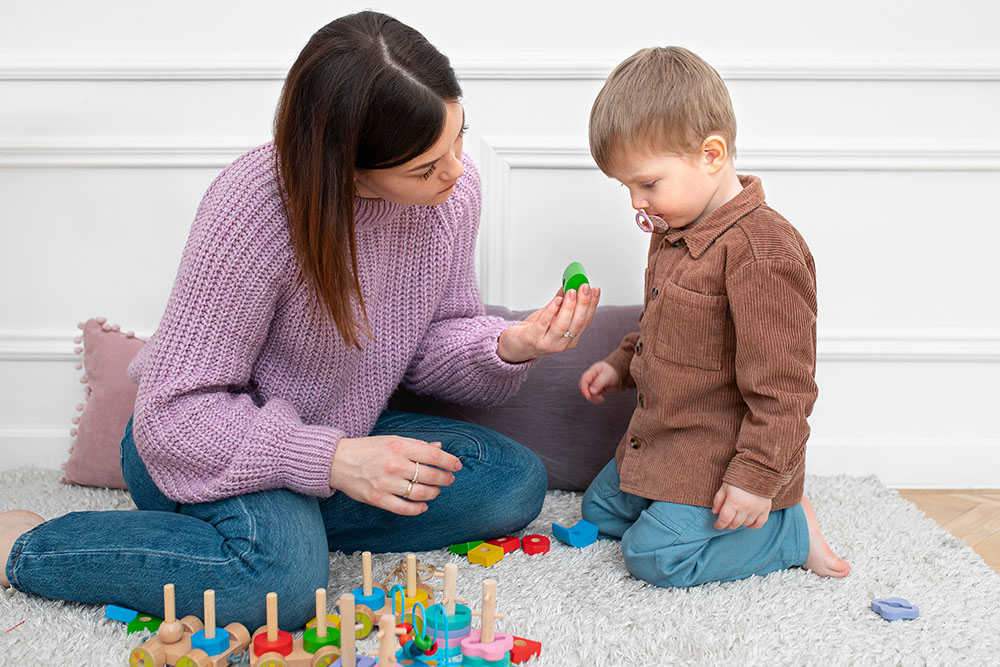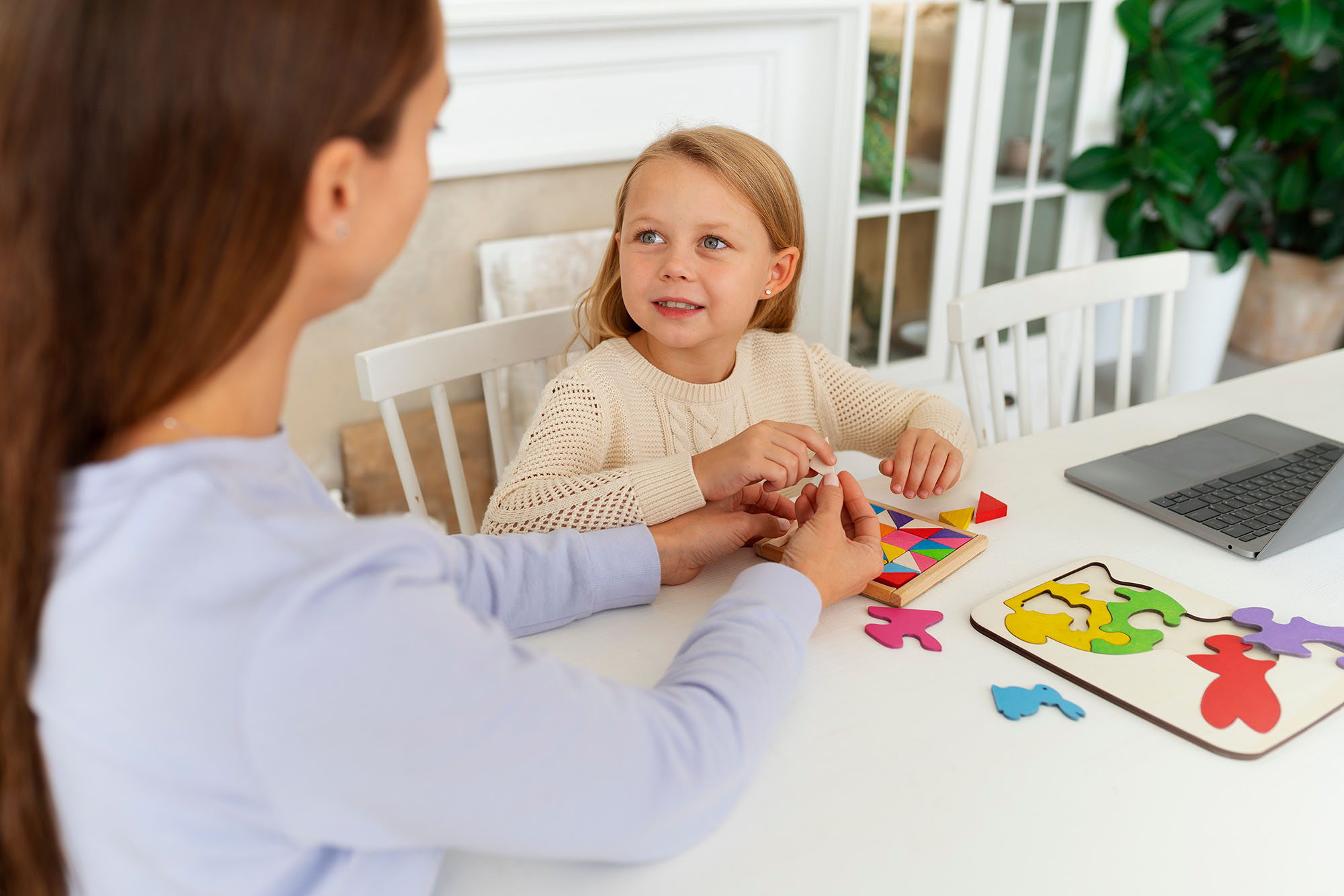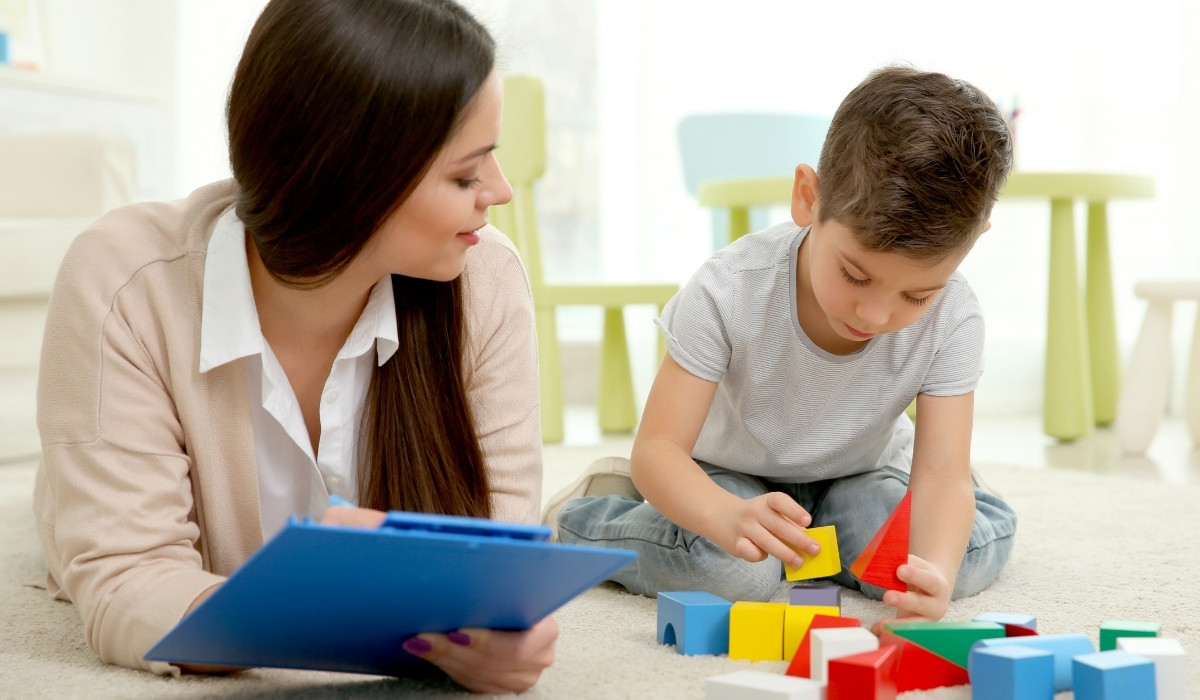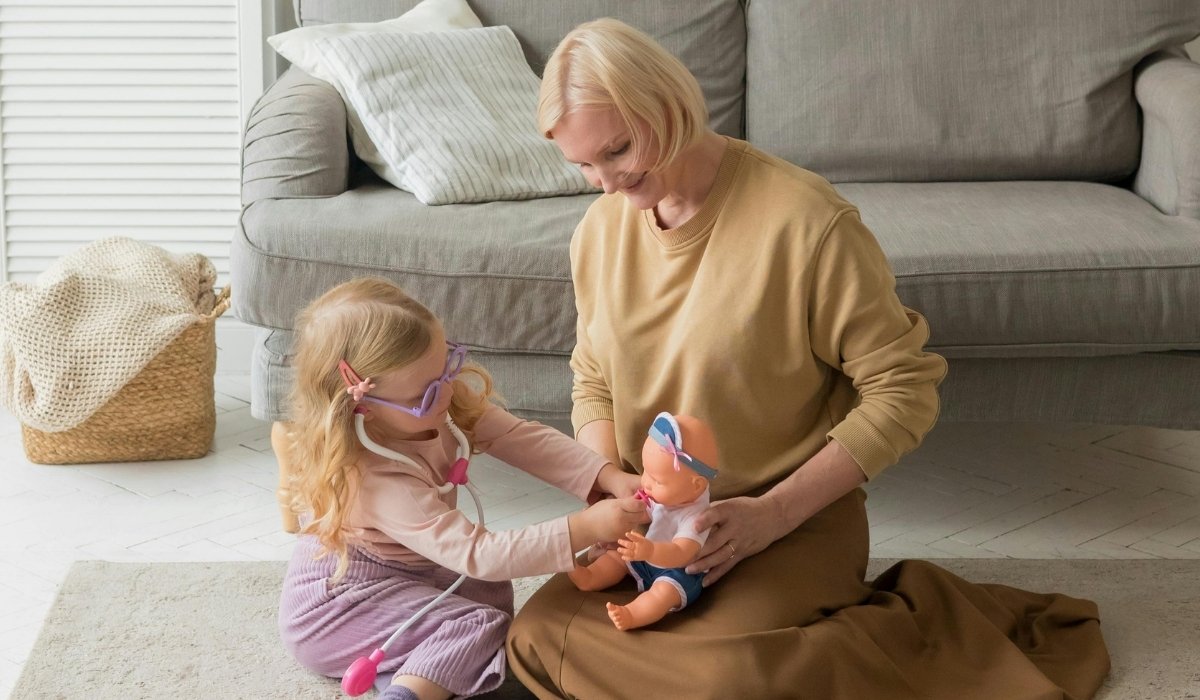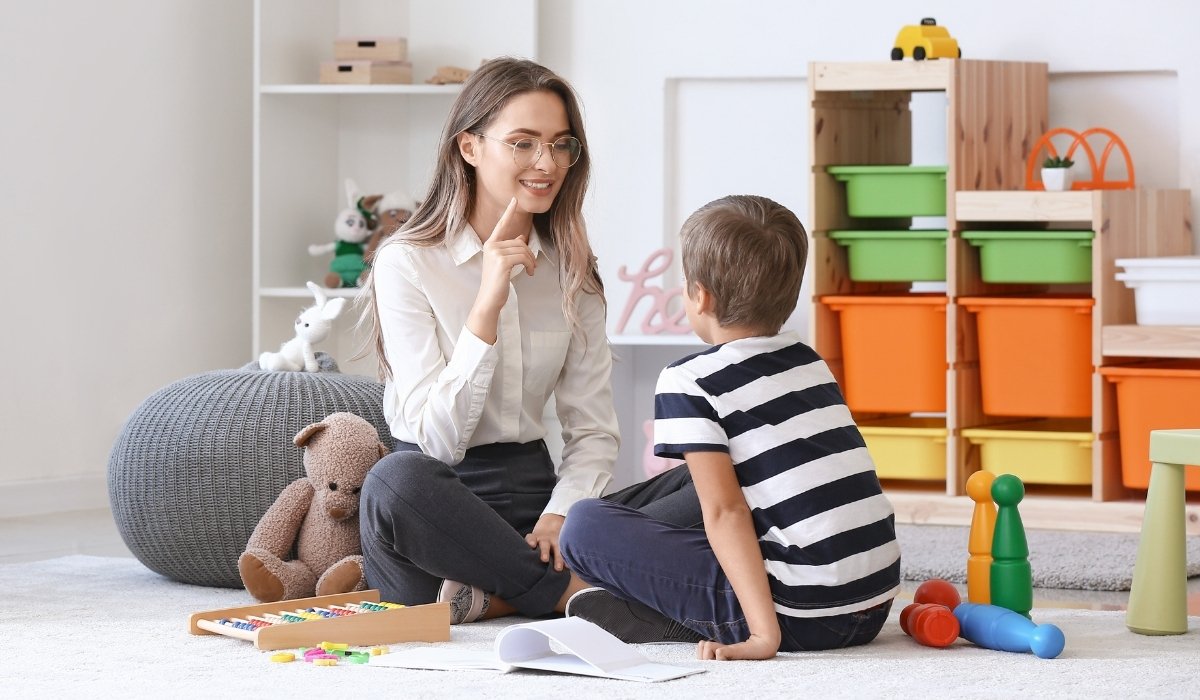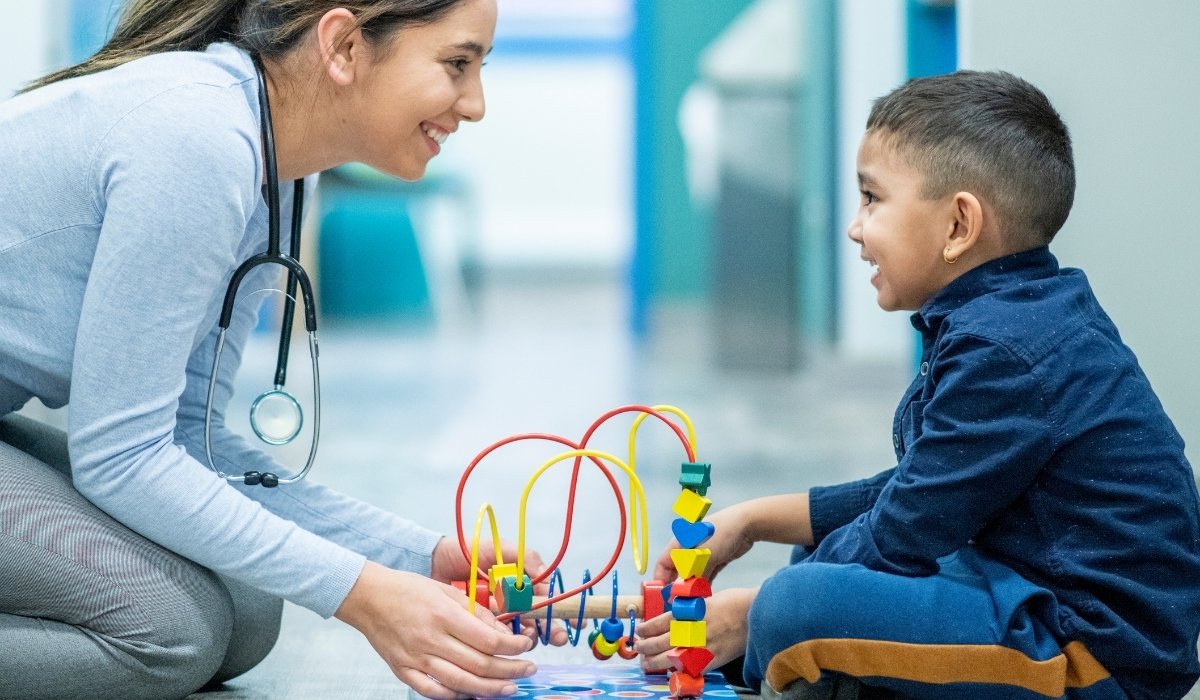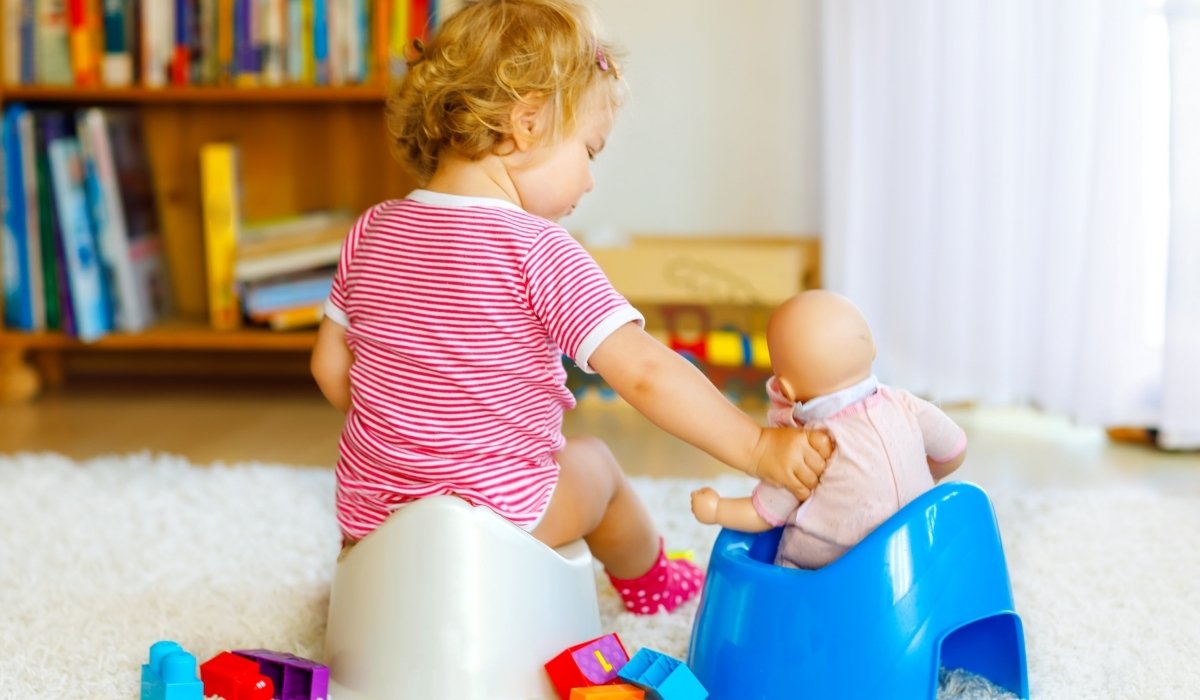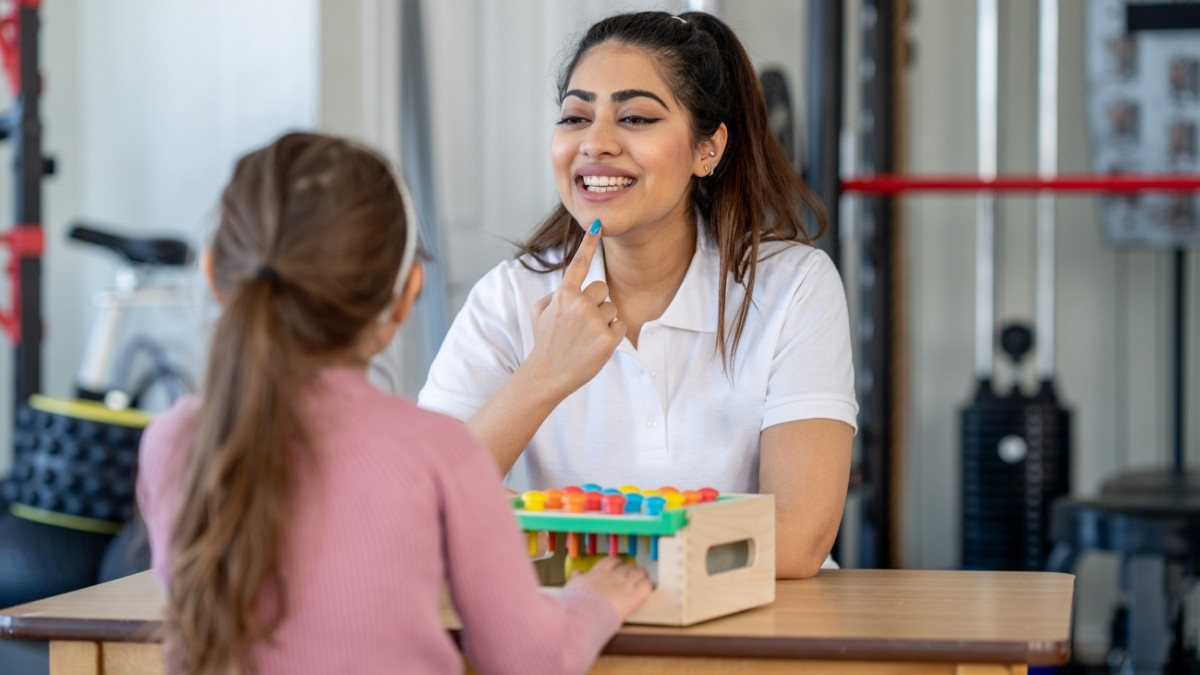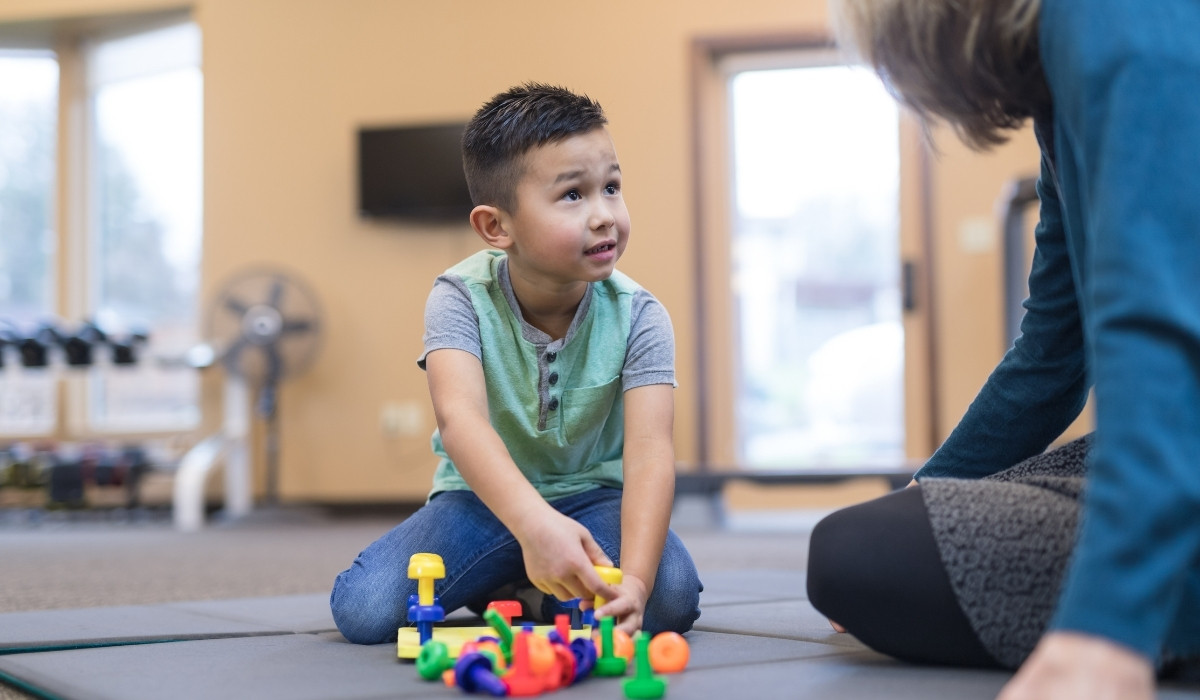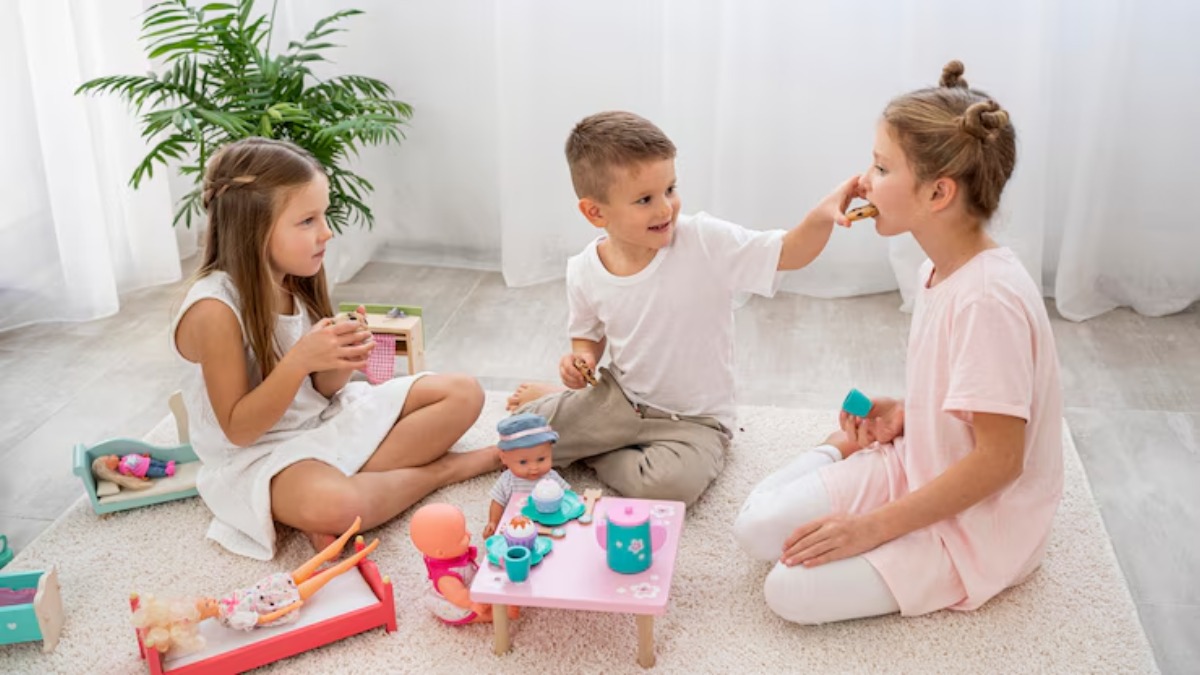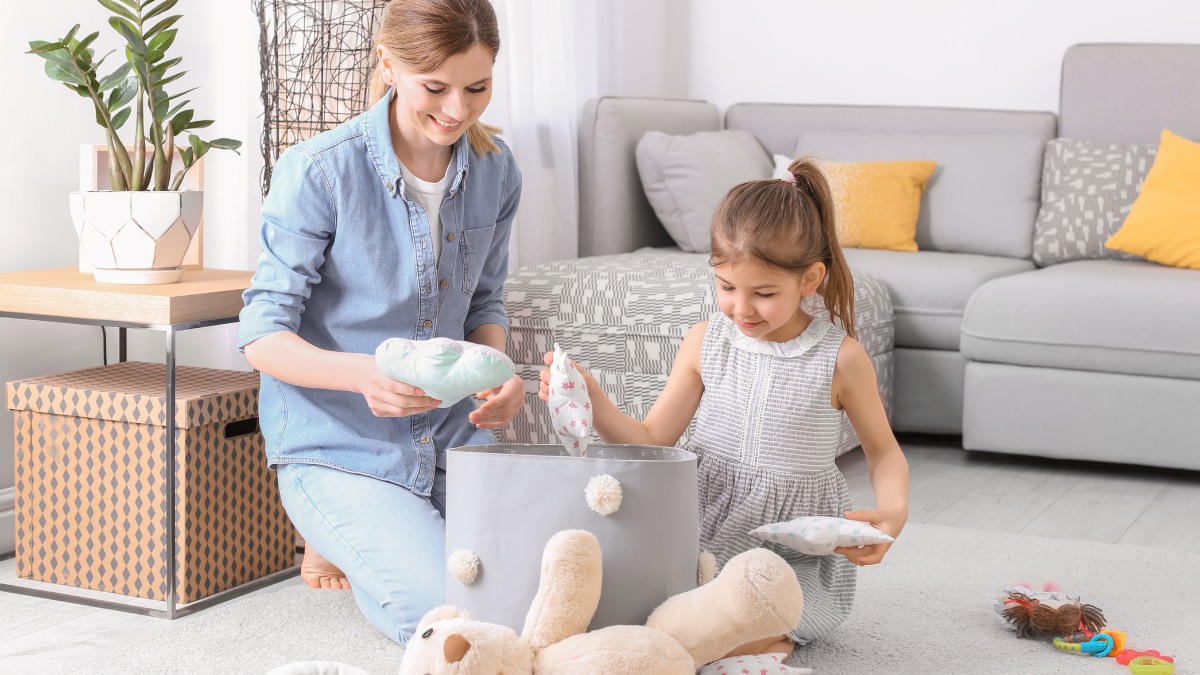How to Build Self-Awareness with DIR Floortime in 6 Steps
July 7, 2025
Boost emotional insight and self-recognition in your child through 6 practical DIR Floortime steps that foster authentic self-awareness.

Key Points:
- DIR Floortime helps children recognize emotions, behavior, and thoughts through structured, interactive play.
- Caregivers play a central role in guiding the child’s self-awareness journey during and outside therapy.
- Building self-awareness leads to better emotional regulation, communication, and resilience in children.
Before we dive into the specific ways DIR Floortime nurtures self-awareness, it’s important to understand what this approach truly involves. At its core, DIR Floortime is more than just a play-based model—it’s a deeply attuned, relationship-driven method that helps children build the foundations of emotional insight and connection.
By meeting each child where they are developmentally and emotionally, DIR Floortime creates a safe and engaging path toward self-understanding. So, how exactly does this model guide children toward recognizing and reflecting on their inner world?
Let’s begin by exploring what DIR Floortime is and why it plays such a pivotal role in developing self-awareness.
What is DIR Floortime and How Does It Support Self-Awareness?
DIR Floortime is a relationship-based intervention model that uses play to build emotional and developmental capacities in children. It stands for Developmental, Individual-differences, Relationship-based—a model developed by Dr. Stanley Greenspan. Self-awareness is one of the core developmental capacities targeted by DIR Floortime.
In this model, therapists and caregivers engage the child through emotionally meaningful interactions. These are not random moments of play; each interaction is tailored to the child’s developmental level, individual sensory profile, and unique emotional needs. Through these exchanges, the child gradually learns to recognize their feelings, express their desires, and reflect on their behaviors.
DIR Floortime is particularly effective for children on the autism spectrum or those experiencing delays in emotional or social development. Because it doesn’t impose rigid expectations, it allows the child to take the lead and explore their inner world safely—with the support of a responsive adult.
Developing self-awareness in children through DIR Floortime is not a single action—it’s a developmental journey built on connection, curiosity, and emotional safety. To foster genuine self-reflection, we begin by tuning into the child’s world, not steering it. Each of the following key steps builds on the one before, guiding children from simple engagement to deep inner understanding.
Let’s explore how this process unfolds, beginning with the most foundational approach: following the child’s lead to spark meaningful connection.
Step 1: Follow the Child’s Lead to Build Engagement
Before children can explore their inner thoughts or emotions, they must first feel seen and accepted. This begins with joining their world.
DIR Floortime starts by observing the child’s current interests—whether it’s spinning a toy, lining up cars, or making repetitive movements. Instead of redirecting, the adult enters the play in a respectful, non-intrusive way. By doing so, the child becomes more receptive and emotionally invested.
Why This Matters for Self-Awareness:
When a child feels emotionally safe, their brain is more open to learning and reflection. Following their lead also validates their preferences, helping them identify likes, dislikes, and sensory sensitivities.
Examples of How to Follow the Child’s Lead:
- If a child is fixated on stacking blocks, join in by stacking beside them or commenting: “Wow, you love making tall towers!”
- For children who gravitate toward movement, imitate their jumping or clapping to signal shared attention.
- Use simple language to narrate what’s happening: “You’re smiling—that must feel fun!”
This step lays the groundwork for deeper emotional exploration. Over time, as the child becomes more comfortable with shared attention, they're better prepared to examine how their body, mind, and emotions work together.
Step 2: Expand Emotional Awareness Through Affective Engagement
Once a child is engaged, the next step is to help them connect emotional states to real-time experiences.
This doesn’t mean asking direct questions like, “How do you feel right now?” For most children—especially those with communication delays—that question might be abstract or overwhelming. Instead, therapists and caregivers use affective engagement: expressing emotion through tone, facial expressions, and gestures to match or mirror the child’s state.
How Affective Engagement Builds Self-Awareness:
By reflecting a child’s emotions back to them in real time, adults help children “see” their internal experiences externally. This is foundational in helping them label and eventually regulate their emotions.
Strategies to Use Affective Engagement:
- Mirror the child’s expressions and label emotions: “You’re stomping your feet! That looks like frustration.”
- Use exaggerated but appropriate expressions to match energy: a warm smile for joy, a furrowed brow for confusion.
- Allow space for response. Don’t rush to correct or distract. Let the child process the emotional feedback.
This step begins teaching children that emotions are not mysterious or overwhelming forces—they’re understandable, nameable, and manageable.
Step 3: Use Symbolic Play to Explore Inner Experiences
Symbolic play—using one object to represent another or acting out scenarios—creates a safe space for children to “try on” emotions, roles, and social dynamics. DIR Floortime harnesses this natural developmental milestone to promote reflection.
At this stage, children start to move from simply reacting emotionally to representing feelings in stories or pretend scenarios.
Why Symbolic Play is Critical for Self-Awareness:
Symbolic play allows children to distance themselves slightly from intense emotions, making it easier to process and understand them. When a child uses a puppet to show anger, they’re indirectly exploring their own experiences.
Ways to Promote Symbolic Play in DIR Floortime:
- Introduce dolls, animal figurines, or puppets to act out daily events or emotional scenarios.
- Follow the child’s themes—if they’re drawn to superheroes, build stories around strength and vulnerability.
- Prompt gently. “What is the bear feeling after losing his toy?” or “Can you help the baby calm down?”
This imaginative space becomes a mirror through which children can view their own emotions, behaviors, and relationships. With adult support, they gradually begin to link the external (play) world with their internal (emotional) world.

Step 4: Strengthen Reflective Thinking Through Open-Ended Questions
Once symbolic play is established, DIR Floortime expands the child’s capacity for reflective thinking—the ability to consider past experiences, thoughts, and feelings.
This is achieved through consistent, open-ended dialogue that doesn’t test knowledge but invites self-exploration. The adult becomes a curious partner, not an interrogator.
The Power of Reflective Thinking in Self-Awareness:
Reflective questions teach children to pause, examine a situation, and consider their response. This cognitive shift—from reacting to reflecting—is central to long-term emotional growth.
Effective Question Techniques:
- Use prompts like: “What do you think happened when that toy broke?”
- Reflect back observations: “You seemed really proud when you built that tower—what made it special?”
- Avoid binary questions (“Did you like that?”); instead, offer choices: “Did you feel excited or surprised?”
These conversations build a mental habit of self-reflection, empowering children to better understand their thoughts and behaviors across contexts.
Step 5: Support Regulation Through Co-Regulation Strategies
Self-awareness doesn’t develop in isolation. Children need repeated, emotionally attuned support to manage dysregulation before they can do it independently.
DIR Floortime emphasizes co-regulation—the process of helping a child return to a calm state through connection and modeling. This sets the stage for internal regulation.
Why Co-Regulation is Key for Self-Awareness:
When a child learns that emotions can be managed with support, they internalize this process. Over time, they begin to identify triggers, anticipate reactions, and apply coping skills on their own.
Examples of Co-Regulation Techniques in Floortime:
- Deep breathing together during moments of distress
- Offering calm verbal reassurance while staying physically near
- Creating predictable routines to help the child anticipate transitions
DIR Floortime practitioners often work on helping children recognize physical signs of dysregulation: clenched fists, shallow breathing, or fast movements. Labeling these signs helps children connect body cues to emotional states—a vital skill in self-awareness.

Step 6: Track Progress and Adjust Interactions Over Time
DIR Floortime isn’t a static program—it evolves with the child. As self-awareness grows, so must the complexity of interactions and expectations.
Parents and therapists should collaboratively observe patterns, document milestones, and tailor strategies to meet emerging needs. This phase often involves reviewing video sessions, journaling interactions, or noting changes in the child’s expressive range.
Ongoing Adaptation Enhances Long-Term Growth:
By reviewing progress, caregivers can identify which strategies work best for specific emotional states or developmental stages. It also reinforces the value of consistency and intentionality.
Tracking Methods That Support Growth:
- Use daily logs to record key emotional breakthroughs or struggles
- Revisit earlier strategies to see if they still serve the child’s needs
- Gradually increase complexity: move from basic emotion labeling to discussing conflicting emotions or social dilemmas
This reflective practice helps both adults and children refine their understanding of self-awareness and emotional growth over time.
Help Your Child Build Lasting Emotional Skills with DIR Floortime
Self-awareness isn't just a developmental milestone—it’s the foundation of emotional intelligence, resilience, and meaningful relationships. DIR Floortime provides a compassionate, effective framework for guiding children through this essential journey.
At WonDIRfulPlay, we specialize in DIR Floortime services in New Jersey that nurture your child’s emotional and developmental growth through personalized, play-based interactions. Our practice is rooted in deep developmental expertise and a genuine commitment to supporting families.
Whether your child is on the autism spectrum or simply needs extra support in understanding their emotions, our DIR Floortime services are tailored to meet their individual needs. Let us help your child unlock the self-awareness skills they need to thrive—contact us today to learn how we can support your family’s journey.
Recent articles


-ink.jpeg)

-ink.jpeg)
-ink.jpeg)
-ink.jpeg)
-ink.jpeg)


-ink.jpeg)
-ink.jpeg)
-ink.jpeg)
-ink.jpeg)
-ink.jpeg)
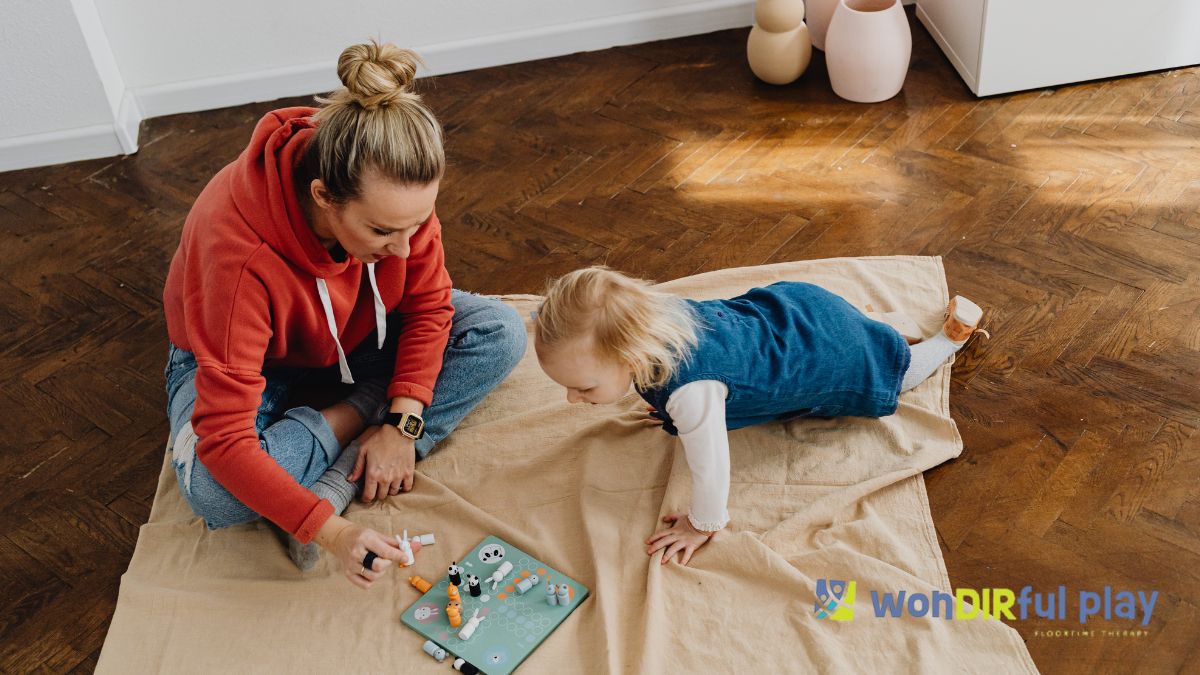
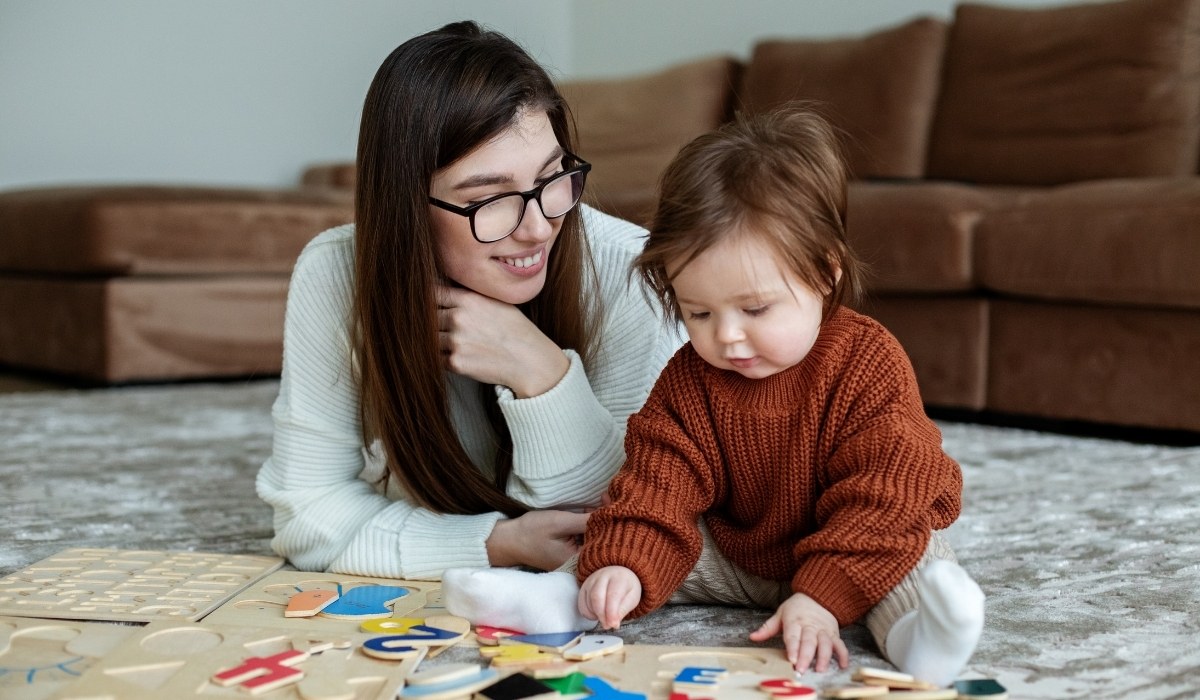
-ink.jpg)
-ink.jpeg)
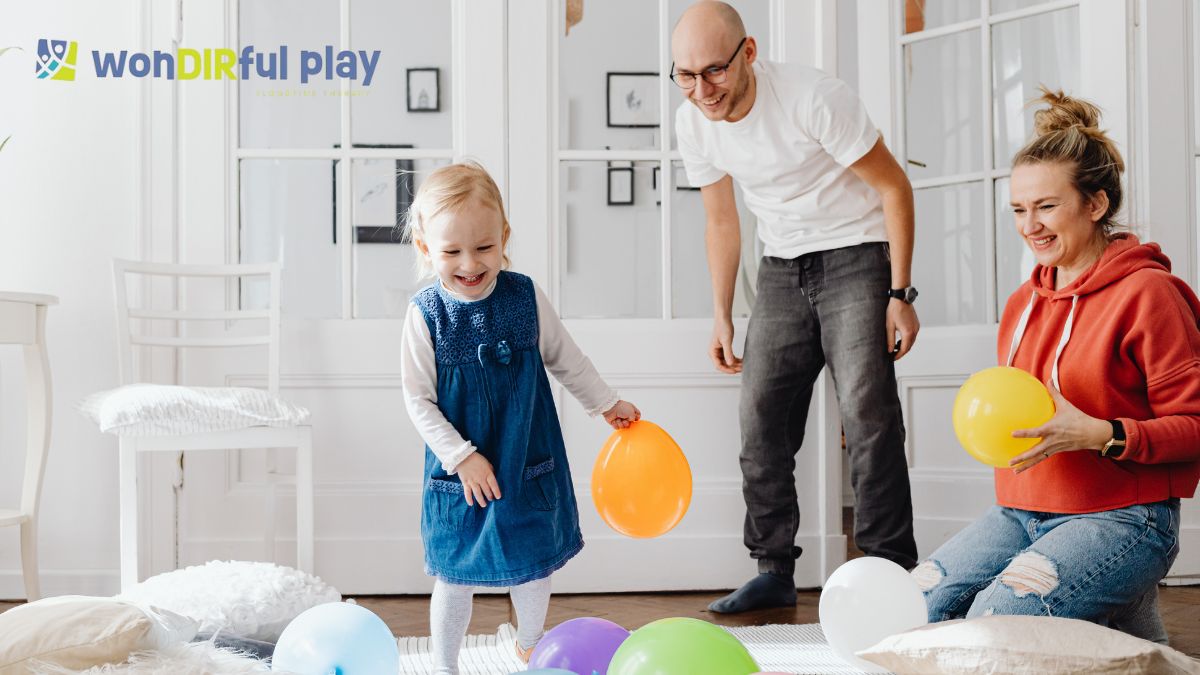
-ink.jpeg)
-ink.jpeg)
-ink.jpeg)
